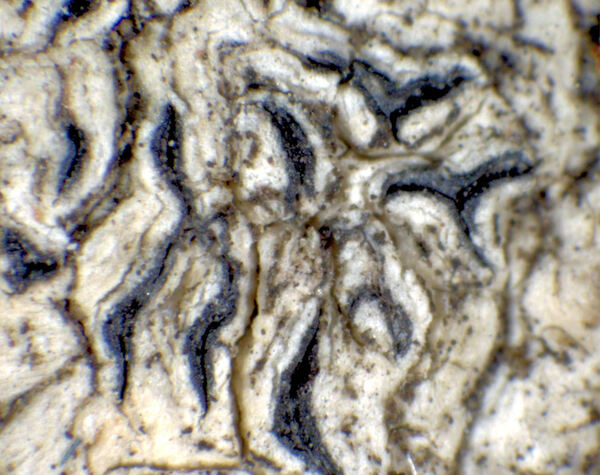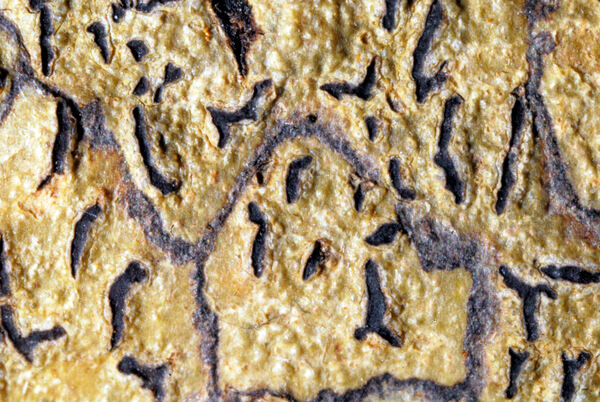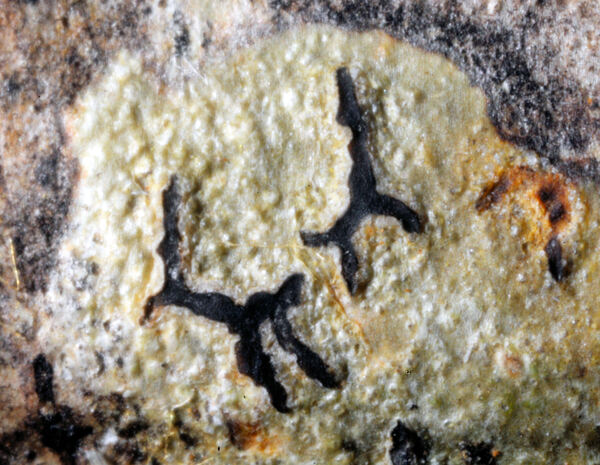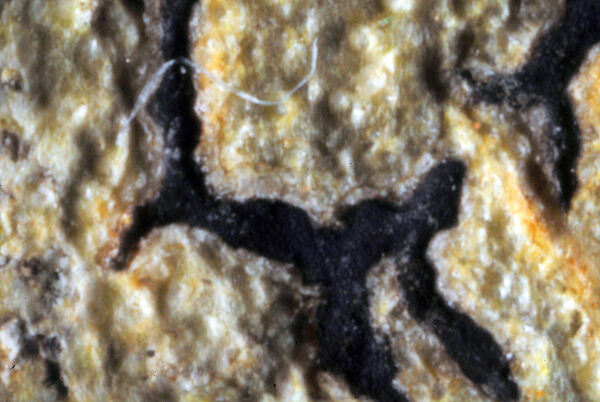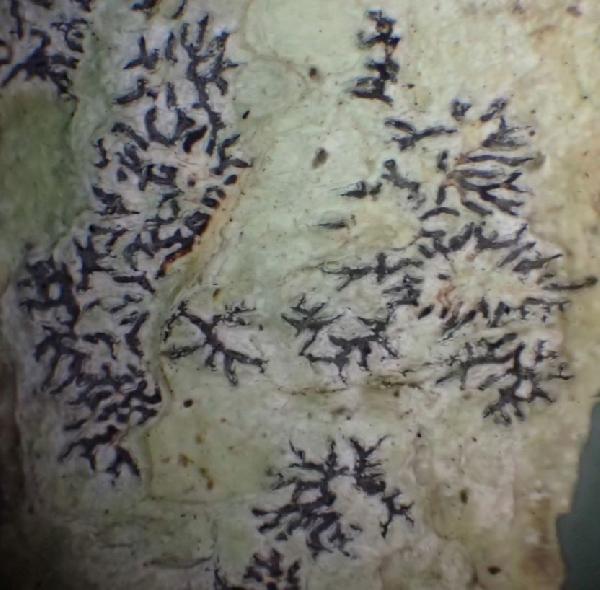Phaeographis inusta (Ach.) Müll. Arg.
Flora, 65: 383, 1882. Basionym: Graphis inusta Ach. - Syn. Meth. Lich.: 85, 1814.
Synonyms:
Distribution: S - Camp (CLU 16913), Cal (Nimis & Puntillo 2003, Puntillo 2011).
Description: Thallus crustose, endosubstratic or thinly episubstratic, more or less glossy, whitish, pale greenish grey to pale yellowish brown, sometimes with an olivaceous tinge. Apothecia lirelliform, immersed in the thallus, simple or often lobate or dendritically branched, 1-3(-5) x 0.1-0.3(-1) mm, with an expanded, grey-black disc and a proper margin without evident excipular lips; a thin, entire, inconspicuous thalline rim is rarely present in young ascocarps. Proper exciple pale to dark brown, 12-15 µm thick laterally, widening to 25(-30) µm in upper part, usually extending below the hymenium; epithecium brown, 5-15 µm high; hymenium colourless, inspersed with oil droplets, (45-)55-85(-90) µm high, I-; paraphyses coherent, c. 1.5 µm thick, sparsely branched in upper part, with brownish, slightly expanded, to 2 µm wide apical cells; subhymenium hyaline; hypothecium dark brown, 12-40 µm high. Asci 8-spored, clavate, to cylindrical-clavate, non fissitunicate, dehiscent by an apical split, K/I-, Graphis-type. Ascospores 3(-5)-septate, with lens-shaped cells, at first hyaline but soon turning brown, (12-)13-25(-30) x (4-)6-8(-9) µm, I+ red or reddish brown. Photobiont trentepohlioid. Spot tests: cortex K-, C-, KC-, P-, UV-. Chemistry: without lichen substances. Note: a mild-temperate to humid subtropical, mainly Atlantic species in Europe, known from a single hyperhumid station in Italy. It is included in the Italian red list of epiphytic lichens as “Data Deficient” (Nascimbene & al. 2013c).
Growth form: Crustose
Substrata: bark
Photobiont: Trentepohlia
Reproductive strategy: mainly sexual
Restricted to humid-warm, oceanic areas
Commonnes-rarity: (info)
Alpine belt: absent
Subalpine belt: absent
Oromediterranean belt: absent
Montane belt: absent
Submediterranean belt: absent
Padanian area: absent
Humid submediterranean belt: absent
Humid mediterranean belt: extremely rare
Dry mediterranean belt: absent
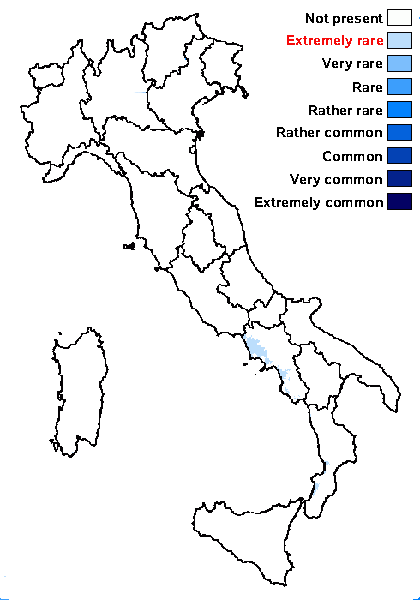
Predictive model
Herbarium samples
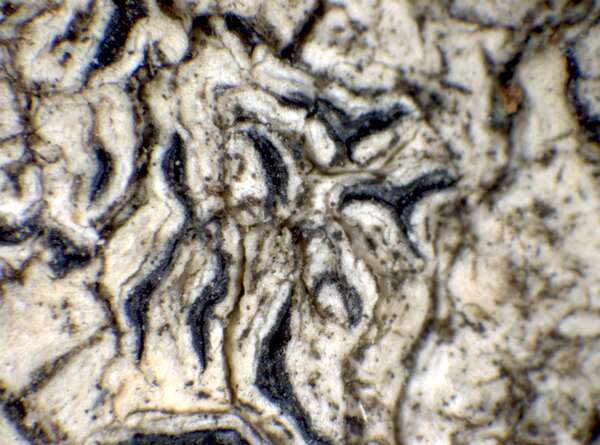

P.L. Nimis; Owner: Department of Life Sciences, University of Trieste
Herbarium: TSB (5092)
2001/11/28
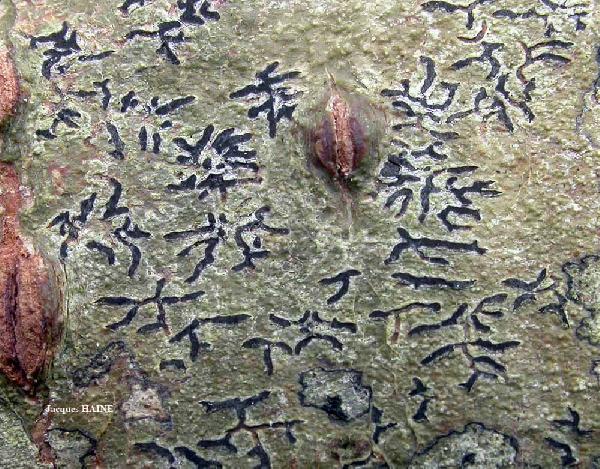
Jacques Haine - Source: http://www.lichensmaritimes.org/index.php?task=fiche&lichen=575&lang=en
France, Ardennes
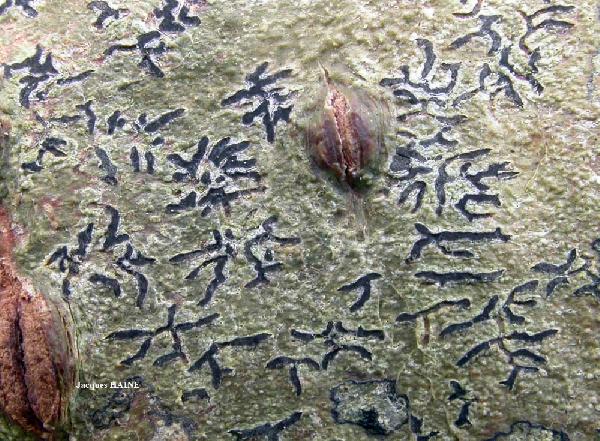
Jacques Haine - Source: http://www.lichensmaritimes.org/index.php?task=fiche&lichen=575&lang=en
France, Ardennes

Jacques Haine - Source: http://www.lichensmaritimes.org/index.php?task=fiche&lichen=575&lang=en
France, Ardennes
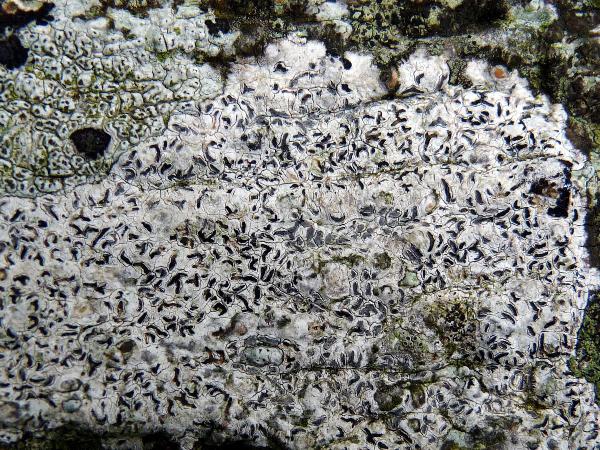
Bernard Bouffinier - Source: http://www.lichensmaritimes.org/index.php?task=fiche&lichen=575&lang=en
France, Abbaye du Reelcq
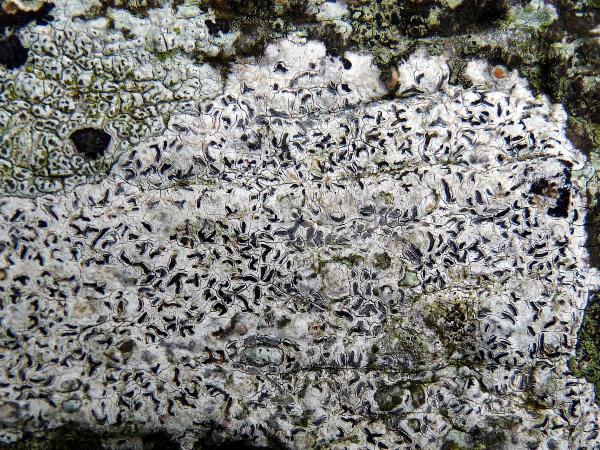
Bernard Bouffinier - Source: http://www.lichensmaritimes.org/index.php?task=fiche&lichen=575&lang=en
France, Abbaye du Relecq
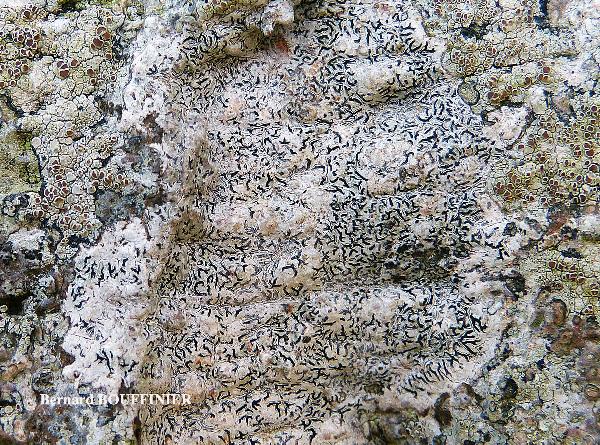
Bernard Bouffinier - Source: http://www.lichensmaritimes.org/index.php?task=fiche&lichen=575&lang=en
France, Abbaye du Relecq
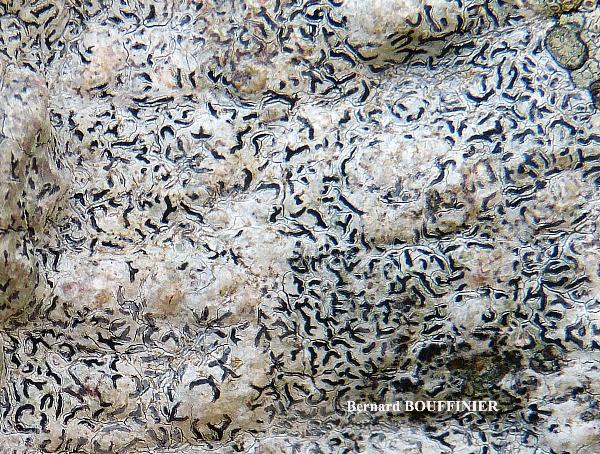
Bernard Bouffinier - Source: http://www.lichensmaritimes.org/index.php?task=fiche&lichen=575&lang=en
France, Abbaye du Relecq

Bernard Bouffinier - Source: http://www.lichensmaritimes.org/index.php?task=fiche&lichen=575&lang=en
France, Abbaye du Relecq
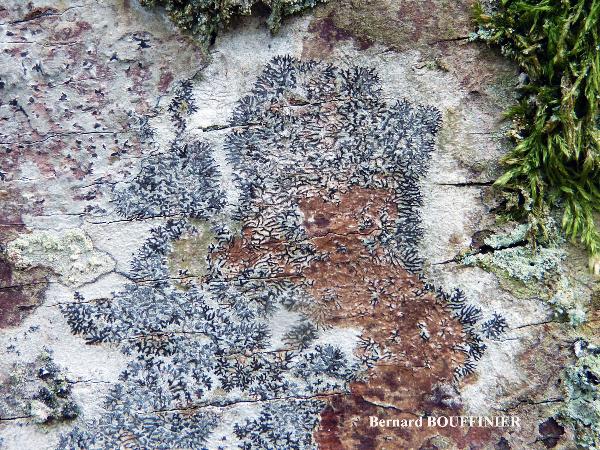
Bernard Bouffinier - Source: http://www.lichensmaritimes.org/index.php?task=fiche&lichen=575&lang=en
France, Coat-Loch

Bernard Bouffinier - Source: http://www.lichensmaritimes.org/index.php?task=fiche&lichen=575&lang=en
France, Coat-Loch
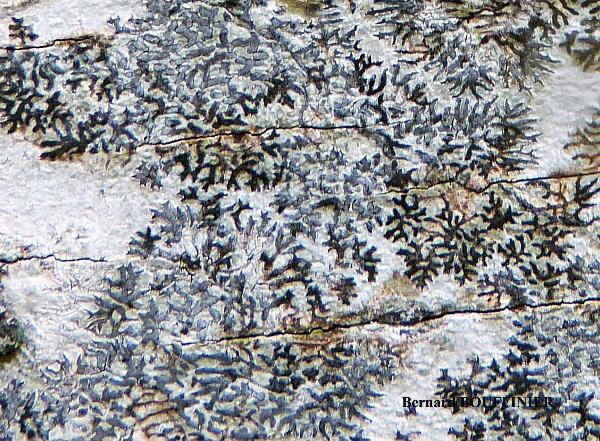
Bernard Bouffinier - Source: http://www.lichensmaritimes.org/index.php?task=fiche&lichen=575&lang=en
France, Coat-Loch

Bernard Bouffinier - Source: http://www.lichensmaritimes.org/index.php?task=fiche&lichen=575&lang=en
France, Coat-Loch
Growth form: Crustose
Substrata: bark
Photobiont: Trentepohlia
Reproductive strategy: mainly sexual
Restricted to humid-warm, oceanic areas
Commonnes-rarity: (info)
Alpine belt: absent
Subalpine belt: absent
Oromediterranean belt: absent
Montane belt: absent
Submediterranean belt: absent
Padanian area: absent
Humid submediterranean belt: absent
Humid mediterranean belt: extremely rare
Dry mediterranean belt: absent

Predictive model
| Herbarium samples |


P.L. Nimis; Owner: Department of Life Sciences, University of Trieste
Herbarium: TSB (5092)
2001/11/28

Jacques Haine - Source: http://www.lichensmaritimes.org/index.php?task=fiche&lichen=575&lang=en
France, Ardennes

Jacques Haine - Source: http://www.lichensmaritimes.org/index.php?task=fiche&lichen=575&lang=en
France, Ardennes

Jacques Haine - Source: http://www.lichensmaritimes.org/index.php?task=fiche&lichen=575&lang=en
France, Ardennes

Bernard Bouffinier - Source: http://www.lichensmaritimes.org/index.php?task=fiche&lichen=575&lang=en
France, Abbaye du Reelcq

Bernard Bouffinier - Source: http://www.lichensmaritimes.org/index.php?task=fiche&lichen=575&lang=en
France, Abbaye du Relecq

Bernard Bouffinier - Source: http://www.lichensmaritimes.org/index.php?task=fiche&lichen=575&lang=en
France, Abbaye du Relecq

Bernard Bouffinier - Source: http://www.lichensmaritimes.org/index.php?task=fiche&lichen=575&lang=en
France, Abbaye du Relecq

Bernard Bouffinier - Source: http://www.lichensmaritimes.org/index.php?task=fiche&lichen=575&lang=en
France, Abbaye du Relecq

Bernard Bouffinier - Source: http://www.lichensmaritimes.org/index.php?task=fiche&lichen=575&lang=en
France, Coat-Loch

Bernard Bouffinier - Source: http://www.lichensmaritimes.org/index.php?task=fiche&lichen=575&lang=en
France, Coat-Loch

Bernard Bouffinier - Source: http://www.lichensmaritimes.org/index.php?task=fiche&lichen=575&lang=en
France, Coat-Loch

 INDEX FUNGORUM
INDEX FUNGORUM
 GBIF
GBIF
